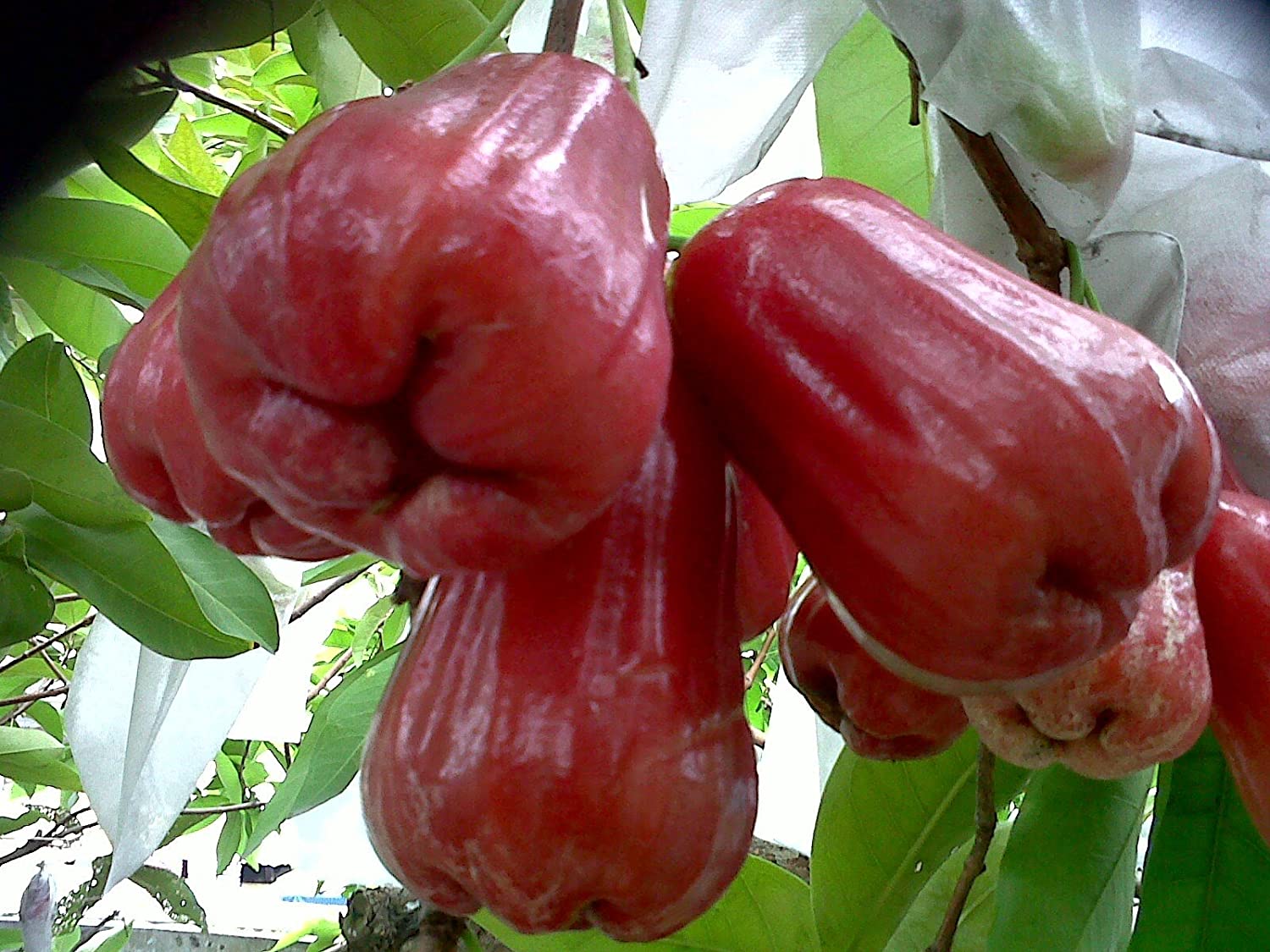Malay apple is an and unique tropical apple now grown, eaten and sold in Nigeria and some tropical countries of the world. As its name suggests, Malay apple originates in the Indo – Malayan region throughout south east Asia’s lowlands and forests.
A delight to the eye in every respect, the Malay apple tree is much admired for the beauty of its flowers and its colourful, glistering fruits. Today in Nigeria, it is in many states of the country that is the trees.
Malay apple is the biggest apple fruit in the world. It has the highest juice content or moisture of between 90.3 to 91.6g, it comes in three (3) distinct colours and shapes. The colours are red, green and white. The shapes are oblong, obovoid and bell. It is appreciated in Nigeria for its unique sweet sour taste by some people. Malay apple is loved by children and the red variety is the commonest in Nigeria for now.
It is highly nutritious and medicinal in nature and this is evident in the nutrient composition and a study published in the Scientific World Journal, Food Chemistry and Puerto Rico Health Sciences Journal. The scientific name is Syzygium malaccense. It is another wonder of the world.
It is strictly tropical. It is intolerant of frost or cold. It prefers year round rainfall, but can tolerate seasonal rain as long as there is no extended dry period. Trees grown in areas with a seasonal dry period need to be irrigated during drought.

Malay apple trees.
Malay apple trees are planted in homes, gardens and on the farms in Nigeria. The tree is prolific producing about two thousand (2,000) apples per tree per harxest and having two ot three harvest per annum when fully established.
Malay apple has wonderful health benefits. The flesh of the apple contains epicatechin that contributes greatly to lowering high blood presssure. It detoxifies the body. It contains water, vitamins and minerals that serve as detoxifiers .
Rich in fibre, so it helps in resolving constipation. It helps in hydrating the body because of its high water content. It contain vitamin A for a clearer and sharper vision. Vitamin C and other minerals present prevent skin cancer.
In Malaysia, the powder from the dried leaves is reportedly used on a cracked tongue, a preparation of the root is a remedy for itching and given to alleviate swelling.
In Cambodia, the roots, leaves and seeds are used to allay fever. In Brazil, various parts of the Malay apple tree are used as remedies for constipation, diabetes, coughs, headache, catarrh, and other ailments. Numerous other uses are reported over the range of the species.
The ripe Malay apple is edible and eaten raw. The skin is thin and the flesh is crisp and white. The slightly unripe apples are used for making jelly and pickles. It is processed into red and white table wines. You can create sweet jams and preserves from the ripe apples.
You can chop raw pieces of the apple for use in fruit salad and chop into fine pieces and add to salsa recipes. The young leaves and shoots before turning green in colour are consumed raw with rice or cooked and eaten as greens.

Ripe Malay apple is edible and eaten raw.
Brief Introduction
I am Gbenga Akinyemi, a graduate of Crop Production from the Federal College of Agriculture, Ondo state, Nigeria, West Africa. I was at the Nigerian Institute for Olilpalm Research, (NIFOR) Edo state, Plant BreedingDivision in 2002 for the one year mandatory National Youth Service Corps Programme (NYSC).
I taught Agricultural science at a private secondary school in Lagos and worked as a Farm Manager at a catfish and Oilpalm production farm between 2003 to 2006.
Presently pioneering Malay apple farming in Nigeria (since 2008).
Send them a WhatsApp at 234-915-088-7543 or e-mail at: akinyemi1972@yahoo.com.










I planted on in my compound over 5years ago and it just starts to produce flowers.